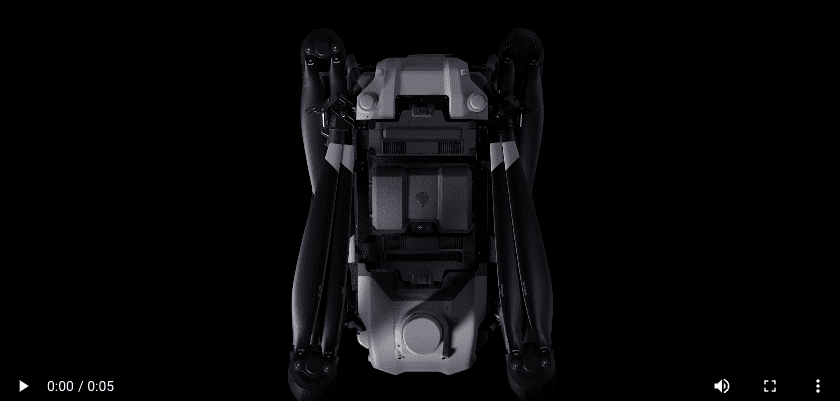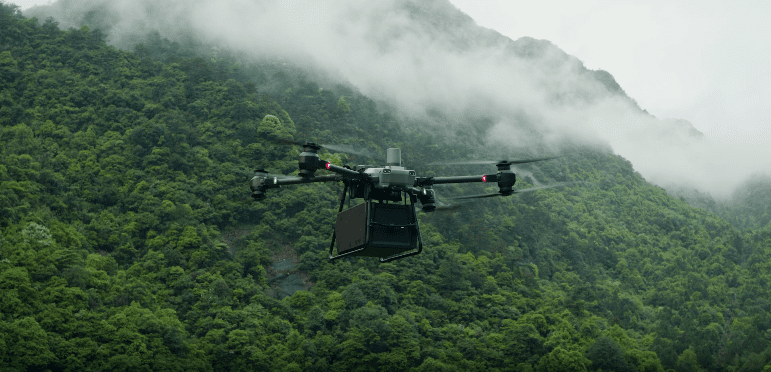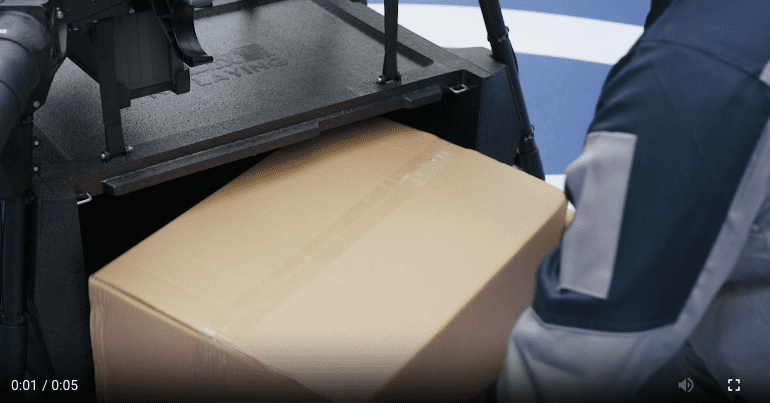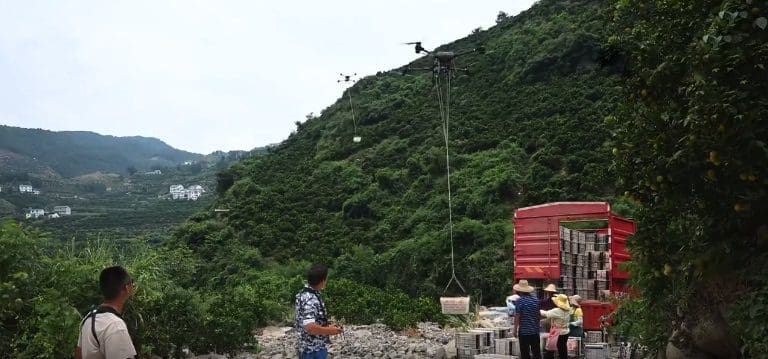Agricultural Drones
AGRISOLAR DRONES
Agricultural drones revolutionize farming by enhancing crop monitoring and precision, boosting yields, optimizing resource use, reducing costs, supporting sustainable practices, and streamlining crop transportation.

Agri-Drones
Charged by Solar Energy








AgriSolar Drones: Boosting YieldS, REDUCING EMISSIONS
AGRICULTURAL DRONE BENEFITS
Precision Agriculture
Drones can deliver precise and detailed views of a field, allowing farmers to assess crop health and soil conditions. This leads to better decision-making regarding fertilizers, pesticides, and irrigation.
Crop Monitoring
Drones equipped with advanced sensors monitor vast areas of farmland and track crop growth, identifying issues like fungal or pest infestations early on, which can save entire harvests.
Irrigation Management
Drones with thermal sensors identify which parts of a field are dry or need improvements in irrigation. This helps in efficient water management, reducing waste and increasing crop yield.
Planting and Seeding
Some drones are equipped to carry out seeding and planting directly. They can plant seeds in precisely planned patterns, increasing seed-to-soil contact and improving germination rates.
Pesticide & Fertilizer Application
Drones can spray pesticides and fertilizers more efficiently and uniformly than traditional methods, reducing chemical runoff and exposure, thus lowering environmental impact.
Post-Harvest Analysis
After harvest, drones can assess fields to analyze post-harvest wastage and prepare for upcoming planting seasons, helping in continuous improvement of farming practices.
Post-Harvest Transportation
Drones assist in transporting crops from fields to storage facilities or markets. This can be particularly useful in rugged terrains or remote areas, enhancing logistical efficiency and reducing transportation costs.
Disease Detection and Control
Drones with high-resolution cameras identify early plant diseases through color analysis. Quick treatment of affected areas reduces chemical use, minimizes crop loss, and enhances yields with lower environmental impact.
Data Collection and Analytics
The data collected by drones can be used to perform detailed analyses on many aspects of farm management, from crop health to yield prediction, enhancing strategic planning and operational efficiency
Agricultural Drone Delivery Centers
- Small Agrisolar Vertical Farms
-
We specialize in deploying compact agrisolar vertical farms in remote locations to empower smallholder farmers by integrating high-value crops alongside their traditional stable yields. Our innovative “Drop, Crop, and Grow” approach allows these farmers to diversify their agricultural production without extensive infrastructure investments. However, a significant challenge remains: ensuring these valuable crops reach the market efficiently. Here, agricultural drone transportation presents a viable solution. By utilizing drones, we can bridge the gap between remote farms and markets, ensuring timely and cost-effective delivery of fresh produce directly from our agrisolar vertical farms.


- Crop Transportation
-
In the fresh fruits and vegetable industry, post-harvest losses can reach a staggering 30-40% annually in some regions, representing a significant challenge for the sector. Notably, a study published in the International Journal of Scientific Research and Management (IJSRM) highlighted the transformative potential of drone-based delivery systems. This research indicated that implementing drones could reduce these losses by up to 50%. Additionally, pilot projects have demonstrated that drone delivery can decrease wastage by about 20%, showcasing its efficacy in enhancing the supply chain’s efficiency and sustainability. By transitioning a significant portion of transportation from road to aerial delivery, drone systems not only minimize wastage but also empower farmers by increasing their incomes and promoting environmentally sustainable practices. Overall, drone delivery emerges as a promising solution to revitalize the agri-commodity industry, improving the lives of farmers and reducing carbon emissions.
- Agri-Drone Delivery Centers
-
**The Advantages of Drone Delivery in Agriculture**
The era of drone delivery for rapid agricultural transportation has arrived, offering more than just an innovative twist to farming logistics. As the agricultural sector recognizes the benefits, both farmers and agribusinesses are increasingly adopting this futuristic approach to crop transportation. Let’s explore these advantages more closely.
**Speed and Efficiency**
One of the foremost benefits of drone delivery in agriculture is its speed. Drones provide a congestion-free transportation method, crucial for perishable goods like fresh fruits and vegetables. Unlike traditional methods, which may involve trucks getting delayed by traffic jams or poor road conditions, drones follow a direct, unobstructed aerial path. This ability ensures that crops can be transported from farms to markets or processing centers in a fraction of the time, greatly reducing the risk of spoilage.**Environmental Impact**
Drone delivery also aligns with the growing global push towards environmental sustainability. Most drones operate on electric batteries, eliminating the direct emissions associated with diesel or gasoline-powered vehicles. As drone fleets expand, this shift is expected to significantly decrease the carbon footprint associated with agricultural logistics. Additionally, drones generate considerably less noise than traditional vehicles, contributing to lower noise pollution levels in rural and urban areas alike.**Accessibility**
In many agricultural regions, especially those characterized by challenging terrains or isolated locations, traditional delivery and transportation methods can be slow or altogether impractical. Drones excel in these environments, capable of flying over mountains, large bodies of water, and uneven fields to deliver essential agricultural inputs and transport crops. This capability is particularly valuable for reaching remote farms and ensuring consistent supply chains, even in adverse conditions.**Operational Mechanics**
While the technology might seem straightforward, significant behind-the-scenes work ensures effective drone operations in agriculture. Ordering processes are adapted to include drone delivery options, with crops being packaged securely to withstand transit. Advanced GPS and autonomous flying technology guide the drones, although human oversight remains crucial for handling unexpected scenarios. Upon arrival, drones may land to unload produce or employ a tether system to lower crops gently at their destination, often notifying receivers in real-time.In summary, drone delivery in agriculture is transforming how crops are transported, enhancing speed, reducing environmental impact, and improving accessibility, making it a cornerstone of modern agricultural practices.
We specialize in deploying compact agrisolar vertical farms in remote locations to empower smallholder farmers by integrating high-value crops alongside their traditional stable yields. Our innovative “Drop, Crop, and Grow” approach allows these farmers to diversify their agricultural production without extensive infrastructure investments. However, a significant challenge remains: ensuring these valuable crops reach the market efficiently. Here, agricultural drone transportation presents a viable solution. By utilizing drones, we can bridge the gap between remote farms and markets, ensuring timely and cost-effective delivery of fresh produce directly from our agrisolar vertical farms.


**The Advantages of Drone Delivery in Agriculture**
The era of drone delivery for rapid agricultural transportation has arrived, offering more than just an innovative twist to farming logistics. As the agricultural sector recognizes the benefits, both farmers and agribusinesses are increasingly adopting this futuristic approach to crop transportation. Let’s explore these advantages more closely.
**Speed and Efficiency**
One of the foremost benefits of drone delivery in agriculture is its speed. Drones provide a congestion-free transportation method, crucial for perishable goods like fresh fruits and vegetables. Unlike traditional methods, which may involve trucks getting delayed by traffic jams or poor road conditions, drones follow a direct, unobstructed aerial path. This ability ensures that crops can be transported from farms to markets or processing centers in a fraction of the time, greatly reducing the risk of spoilage.
**Environmental Impact**
Drone delivery also aligns with the growing global push towards environmental sustainability. Most drones operate on electric batteries, eliminating the direct emissions associated with diesel or gasoline-powered vehicles. As drone fleets expand, this shift is expected to significantly decrease the carbon footprint associated with agricultural logistics. Additionally, drones generate considerably less noise than traditional vehicles, contributing to lower noise pollution levels in rural and urban areas alike.
**Accessibility**
In many agricultural regions, especially those characterized by challenging terrains or isolated locations, traditional delivery and transportation methods can be slow or altogether impractical. Drones excel in these environments, capable of flying over mountains, large bodies of water, and uneven fields to deliver essential agricultural inputs and transport crops. This capability is particularly valuable for reaching remote farms and ensuring consistent supply chains, even in adverse conditions.
**Operational Mechanics**
While the technology might seem straightforward, significant behind-the-scenes work ensures effective drone operations in agriculture. Ordering processes are adapted to include drone delivery options, with crops being packaged securely to withstand transit. Advanced GPS and autonomous flying technology guide the drones, although human oversight remains crucial for handling unexpected scenarios. Upon arrival, drones may land to unload produce or employ a tether system to lower crops gently at their destination, often notifying receivers in real-time.
In summary, drone delivery in agriculture is transforming how crops are transported, enhancing speed, reducing environmental impact, and improving accessibility, making it a cornerstone of modern agricultural practices.